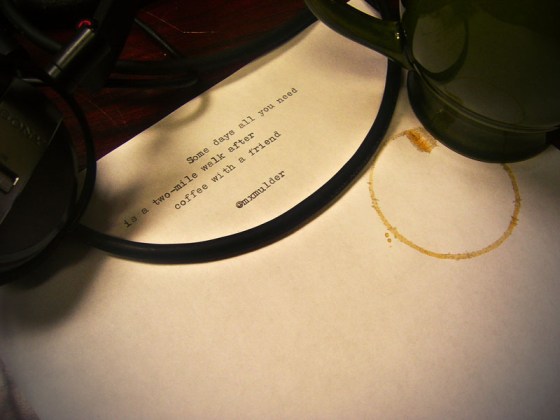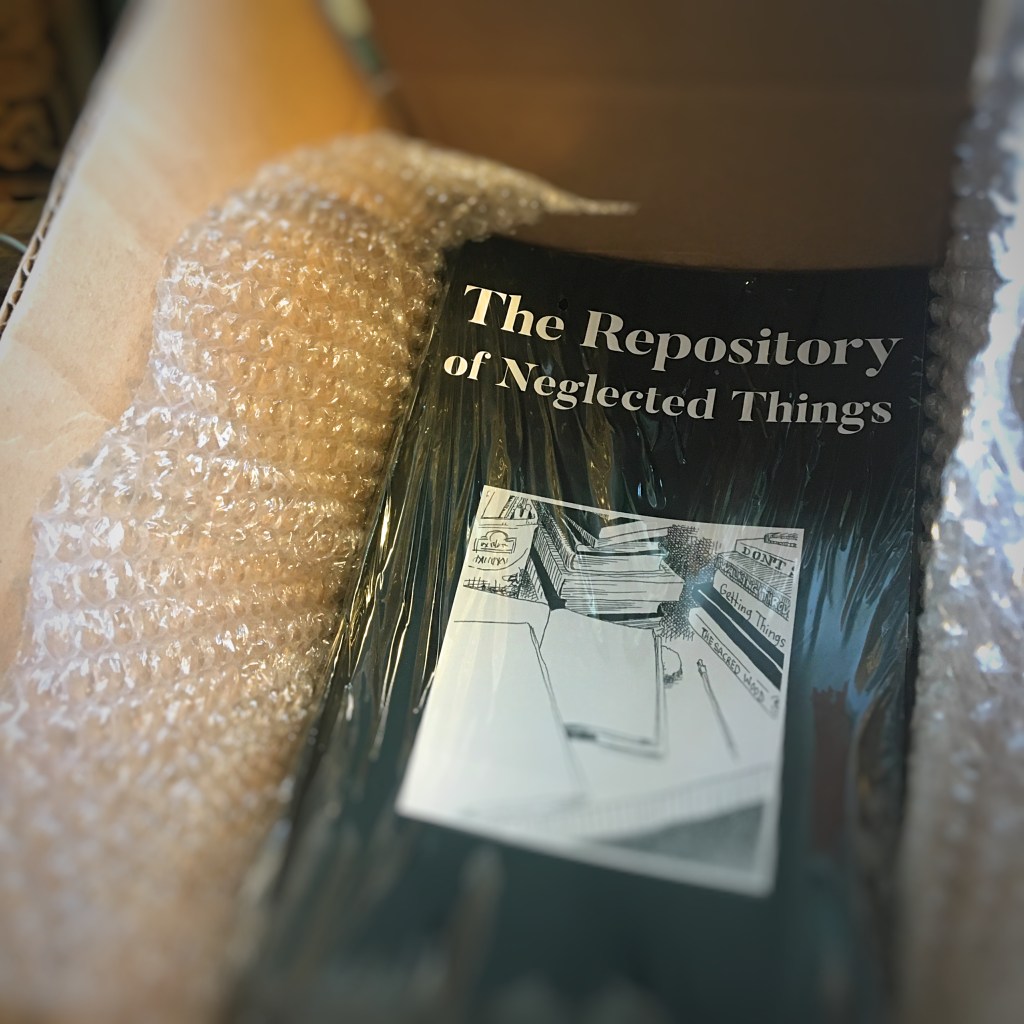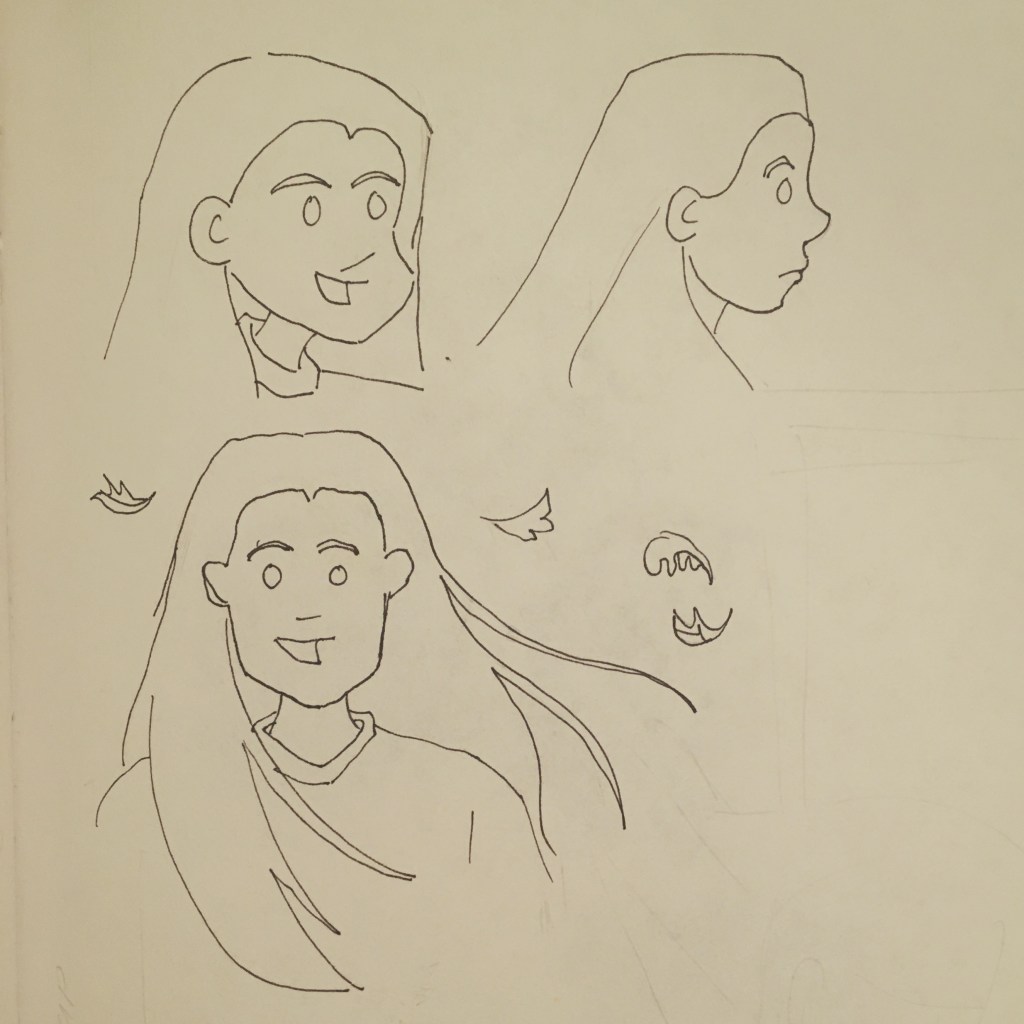
A poem for a friend composed on a manual typewriter
At least eight years ago, an old beat up manual typewriter provided a platform to compose poetry and other writings.1 It was an effort to return to an intentional practice of crafting poetry and prose without distraction of disruptive media.
For years and years, a notebook, journal or sketchbook was never far from reach. But one night after a long night of poetry and music at Beanstreets followed by an even longer time of coffee and conversation at Old Europe, a friend convinced me to try blogging.

Sample journal page of poetry
The immediate response to blogging was infections.2 Connecting with people all over the country, sharing writing samples or books read and being part of an active digital community was exciting. And the feedback on written work was quick — sometimes within a couple days or hours. The practice of writing allowed me to hone the craft of creative writing and exposed me to other writers across the country. One of those bloggers actually showed up at a poetry gig I did. She was on a cross-country trip to visit friends and wanted to visit in real life.
Over time, I noticed that my practice of writing notes, daily sketches and other activities had all but disappeared. Relying on keyboards, display screens, hard drives and servers presented became a crutch. My writing drafts and sketches appeared deceptively crisp and final in neatly formatted text documents and web blog interface windows.
So, I pulled the plug. Returned to handwriting and typing as practice.3 Some friends and fellow poets saw a few samples of typewritten work and suggested I post it on my blog. It was a novelty. A curiosity. So, I did.
One of the first photographs of a poem I composed on a typewriter was written for a friend. It was posted about this time of year — in 2011.4 A few days later I followed up with another poem5 that was later read at poetry event where I and other poets were dubbed “the next generation” of Asheville poets.6
I do not claim to be the first person to post an image of a poem typed on a manual typewriter. But I noticed a trend in that direction about a year after posting those images of typed poem sketches.7 Not sure exactly if I started the trend. Probably not. Maybe other like-minded individuals who sought to return an organic practice of handwriting and typing as a mode of composing their visions and ideas.
After relocating to the southern boarder of the Great White North,8 I continued using the manual typewriter as a mode of composing new work — both poetry and prose. Some of this was due to the original intent of the practice — crafting content without distraction of disruptive media. Some of the use of the manual typewriter was due to a period of time that I was without a functional laptop and no internet access. A local writers group saw a lot of typed first drafts from that manual typewriter. One of those typed drafts was later published as a short story.9
Most recent first drafts have all been handwritten if not typed on one — of now two — of the manual typewriters. Blogging. Well, that has atrophied. Maybe I’ll post some photos of typewritten drafts this year as a way to keep the blog active. But, to celebrate an eight year anniversary of analog writing — I’ll keep most of it offline and on paper.10
Keep your stick on the ice and remember to use the lowercase L key when typing the numeral one.
NOTES:
[1] In truth, I composed poems on an electric typewriter prior to that. Did it for decades. Did not own a personal computer until… well, that is another story.
[2] That was when there were a mere couple million web blogs in the world. Now, there are some platforms, like Tumblr, boasting 100 million blogs. The blogosphere has become quite congested.
[3] Examples of some the 30 poems in 30 days journal posts with photos: here, here and here.
[4] April 1, 2011, blog post.
[5] Poem: “Never Look A Doughnut Dealer in the Eyes”
[6] “Rhyme and reason” by Alli Marshall, Mountain Xpress, April 6, 2011. Accessed April 2, 2018. “https://mountainx.com/arts/art-news/040611rhyme-and-reason/”
[7] Examples include Typewriter Poetry (though it seems the web site has not been active since March 19, 2015), Remington Typewriter Poetry (this site too has become inactive with the last entry posted June 2016), and the most popular is Tyler Knott (though his web page has an archive going back to 2003 (which is odd because he uses Tumblr as a platform and Tumblr was launched in early 2007… maybe he migrated his content from some other source to Tumblr… but I digress) the posted images do not begin until 2012 (unless I am mistaken).
[8] A reference to Bob and Doug McKenzie, fictional brothers who hosted the show Great White North (a reference to Canada, aye). For sample episode view Youtube video: https://www.youtube.com/watch?v=0pPRaD6TKLc
[9] Left of the Lake published “Mortal Coil” in 2015. https://coffeehousejunkie.net/2015/08/31/publication-of-mortal-coil/
[10] Original post published on April 21, 2015 https://coffeehousejunkie.net/2015/04/21/typewriter-poetry-and-blogging/







 During the last month I reflected on things I wrote a decade ago. The original idea I had was to simply repost material as a Throwback Thursday blog post. But when I reviewed the writings from those halcyon days before the disruption of iPhones, social media, tweets and posts — I noticed something. The meaning was illusive. I am still pondering it.
During the last month I reflected on things I wrote a decade ago. The original idea I had was to simply repost material as a Throwback Thursday blog post. But when I reviewed the writings from those halcyon days before the disruption of iPhones, social media, tweets and posts — I noticed something. The meaning was illusive. I am still pondering it.

![DSCN5411[sqr-basic-lomo-lofi]](https://coffeehousejunkie.net/wp-content/uploads/2016/04/dscn5411sqr-basic-lomo-lofi.jpg?w=560)
![DSCN5313[sqr-basic-lofi]](https://coffeehousejunkie.net/wp-content/uploads/2016/07/dscn5313sqr-basic-lofi.jpg?w=560)
![DSCN5414[sqr-basic-lomo-lofi]](https://coffeehousejunkie.net/wp-content/uploads/2016/04/dscn5414sqr-basic-lomo-lofi.jpg?w=560)